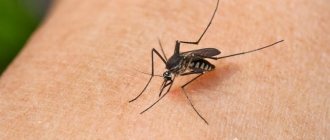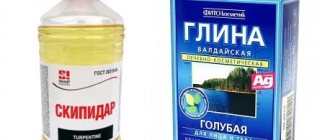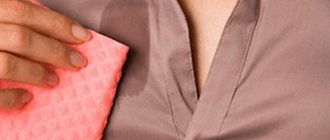Why do armpits sweat, despite the fact that the ambient temperature does not exceed the norm, and people with similar problems are in comfortable conditions? Sweating in the human body is a normal physiological process that performs many important functions, however, excessive sweat secretion concentrated in the armpits often becomes a serious cause of discomfort.
Why do armpits sweat and how to get rid of it?
The skin in the armpits can sweat for many reasons, and the appearance of an unpleasant odor is caused by bacteria, which, under favorable conditions with high humidity, begin to multiply intensively. Often, increased bacterial activity has a detrimental effect on the skin, causing redness, irritation and various types of rashes. In this case, increased sweating of the armpits develops into skin diseases that require medical attention.
To prevent the development of such pathological changes in the condition of the skin, it is necessary to know the causes of profuse sweating and prevent them:
- Increased sweating in the armpit area can be caused by synthetic clothing, which does not allow air to pass through well, thus creating a greenhouse effect,
- Poor diet with a lot of hot, salty and spicy foods, alcohol abuse,
- Hormonal imbalance in the body during menopause or puberty,
- Disturbances in the endocrine system,
- Being in a stressful situation, emotional states,
- An individual trait that is inherited
- Tension during increased physical activity.
Determining the cause of excessive sweating makes it possible to exclude the presence of serious diseases that are characterized by such symptoms. Excessive sweating usually accompanies diseases such as diabetes, kidney disease, AIDS, tuberculosis, and some pulmonary pathologies. To more accurately determine the causes of increased sweating, it is recommended to consult a doctor who will conduct examinations and, if necessary, prescribe treatment.
A doctor's help may also be needed if sweating is accompanied by the following symptoms:
- Sweat has an unpleasant, repulsive odor,
- On the skin of the armpits with profuse sweating, damage has formed, a rash has appeared, there is redness and irritation,
- There is an increase in body temperature, especially if it continues to increase,
- His weight has recently dropped significantly and there are signs of exhaustion.
If there are no such manifestations, and the problem has purely external causes that do not affect the functionality of the body, then you can try to get rid of it on your own, namely:
- Clothing and underwear should be made from natural fabric,
- Do not use antiperspirants, but use talc or powder with disinfectant properties for sweat.
- Take a shower at least twice a day, you can wipe the armpit area with a weak alcohol solution,
- Limit salty, spicy foods, smoked foods and marinades,
- Avoid alcoholic beverages
- Avoid stress as much as possible, and in some cases you will have to take sedatives.
If you sweat profusely in the armpits, you need to start dealing with this problem at the earliest stages. Otherwise, wet clothes and a strong unpleasant odor can affect the psychological state, cause complexes and lead to depression.
Removing odors without washing
The smell from sweat on clothes can be removed without washing it in a washing machine, but just by actively working with your hands. To do this, you need to prepare appropriate solutions in which to leave things for a while, and then rinse in warm water.
The following methods are used for this:
- sweating can be easily washed off with ordinary laundry soap. To do this, soap the contaminated area, then leave the clothes in the solution for 10 minutes, then rinse;
- sweat marks can be washed off with a small amount of shampoo or modern dishwashing detergent. These products are excellent for removing greasy stains;
- You can get rid of traces of sweat by using baking soda. To do this, rub a small amount of the product into the stain and leave it, after soaking it in warm water, for about a quarter of an hour;
- if the item is made of natural fabrics, for example, cotton or linen, then a concentrated solution of table salt will become necessary for this matter. Place 2 tablespoons of salt on a glass and leave the fabric in this solution for half an hour;
- You can remove the smell using table vinegar. To do this, gently rub this product into the problem area;
- fresh lemon juice or a diluted tablespoon of acetic acid in a glass will help eliminate sweaty odor and greasy stains;
- to ensure enhanced action from citric acid, you can add a tablespoon of 9% vinegar to the solution, but in this case, half as much acid is taken;
- ammonia also helps eliminate the appearance of sweat stains on clothes. The solution is prepared as follows: take half a glass of water, a tablespoon of salt and three times the amount of ammonia;
- You should not put things saturated with a sweaty smell in the same car with other things; it is better to soak them first, otherwise other clothes will also be saturated with this smell;
- stain removers offered in stores also cope well with the problem of odor and sweat stains, but they should be used in accordance with the manufacturer’s recommendations;
- place the clothes in the cold for some time, but no more than 3 hours. In summer, such a place is a refrigerator, and in winter it can be placed on the balcony;
- treat sweaty areas with water and then dry with an iron set to high temperature;
- First, drop gasoline on the stain and gently rub it, and then apply ammonia. But this method cannot be used often, since the structure of the tissue is disrupted;
When using all the methods described above, you should remember that this must be done with extreme caution, avoiding overexposure. And before directly using any of the potent agents, including those with a pungent odor, it is necessary to first carry out testing on a fabric hem in order to prevent damage to the material
In order for the result to be achieved and the smell of sweat on clothes to be eliminated, it is necessary to dilute the products in the specified concentrations.
Causes of excessively sweaty armpits
Excessive sweating, or hyperhidrosis, can occur in both men and women, and such changes in the state of the body can occur at any age. This may be caused by the following:
- Pathological conditions in the cardiovascular system caused by VSD, hypertension, etc.,
- Diseases affecting the organs of the endocrine system, such as diabetes mellitus or thyroid disorders,
- Obesity with excess weight,
- Infectious diseases,
- Repetitive stressful situations
- Malignant neoplasms,
- Diseases of the kidneys, liver,
- Decreased immunity
- Hyperhidrosis as an underlying disease.
The causes of increased sweating in the armpit area can be different, and only a doctor can identify them and accurately determine the presence or absence of pathology. Most often, it is possible to determine that the condition that has arisen does not affect the internal organs, so you can easily get rid of this uncomfortable condition.
Causes of sweating
Sweating is a natural process of thermoregulation of the body, without which it is simply impossible for a person to survive. It is extremely undesirable to prevent the excretion of sweat, since along with it salts and harmful toxins come out, which poison the internal organs. But from time to time, a failure occurs in the functioning of the established system, and sweating goes beyond the limits. It is not possible to get rid of wet spots and unpleasant odor from the armpits.
There can be many reasons why armpits smell:
- Increased emotionality. If a person is aggressive, angry or overly nervous, then he begins to sweat profusely. In this case, the cause is identified without examination.
- Temperature. A fairly common cause of sweating is elevated temperature. Whatever the reason for the temperature - flu, oncology, pneumonia, people sweat throughout the day.
- Hormonal imbalance. This problem also causes unpleasant odor under the arms. This pathology is often found in women during menopause.
- Adolescence. At this time, hormonal changes occur in people and reach their peak.
- Obesity. People with large body weight always have increased sweating in any part of the body.
- Serious illnesses. Quite often armpits stink due to the progression of a serious pathology. This could be tuberculosis, HIV, problems with the thyroid gland, endocrine system, diabetes, oncology, benign tumors.
Sweating can also occur as an independent disease called hyperhidrosis.
Why does sweat smell?
Sweat itself is practically odorless. Sweating is a normal physiological function of the body of every person, which is of great importance for cooling the body under stress, elevated temperature, physical activity, and emotional stress.
Sweat is 90% water and has almost no odor. Along with it, salts and trace elements are removed from the body. A specific odor in the armpits appears due to the spread of bacteria that normally live on the surface of the dermis. Absorbing the fatty and protein components of sweat, they separate organic substances into unsaturated fatty acids and ammonia. They are responsible for the smell. The greater the number of pathogenic organisms, the more unpleasant the smell will be.
Some habits and lifestyle features also affect the frequency of sweating. Armpits smell for the following reasons:
- Nutrition. Foods have a serious impact on sweating and the smell of sweat. There are a number of products that increase heat transfer from the body and support sweating, and they also add a strong unpleasant odor to the secretions. These can be seasonings that give food a spicy taste. Usually the stench comes from hot peppers, garlic, ginger, onions, and mustard. Armpits also smell strongly if a person consumes pork and beans. The person begins to sweat profusely, and the smell becomes pungent. Stimulants are products that include caffeine and theobromine. They have a similar effect. Such products include tea, coffee, Coca-Cola, chocolate, cocoa.
- Bad habits. The armpits of those who have bad habits also smell of sweat. Nicotine, alcoholic drinks, and drugs affect the balance of the thermoregulatory system. They change it and promote inappropriately strong sweating.
- Cloth. A garment made of synthetic fabrics, which has low breathability, does not allow moisture to evaporate from the surface of the dermis. For this reason, further initiation of sweating is noted.
- Hygiene. Stinky armpits are much more common in those who have armpit hair. Hair inhibits the process of evaporation of sweat from the surface of the dermis and contributes to a longer observation of the bad odor.
- Physical activity. Insufficient physical activity and excess weight reduce resistance to physical activity. For this reason, excessive sweating develops even with slight exertion.
- Mental balance. Prolonged nervous tension, emotional instability, and frequent worries become the root cause of sweating. If a person is completely healthy and does not avoid the rules of personal hygiene, then the smell will not be very unpleasant.
It is very important to find out before getting rid of armpit odor that the cause does not lie in a dangerous disease
Why does one armpit sweat more than the other?
The degree of sweat secretion in the armpits is usually determined by the size of wet spots on clothing. If there are noticeable differences in the volume of sweating, that is, sweat glands located in the same armpit produce more sweat, then this should alert you. It’s okay if such features have always been present, since this can be associated with body asymmetry. However, if this happened recently, especially since unilateral sweating continues to progress, then this change may be a sign of:
- Inflammatory process developing in the kidneys,
- Neurology,
- Tumor formation
- Disturbance in the hormonal balance of the thyroid gland,
Sudden sweating on one side of the body usually signals some kind of pathology, and the cause of such a change can be identified by several accompanying symptoms.
Why do stubborn stains form?
Sweat secretions, which contain salts and various organic substances, are mixed with antiperspirants and literally eat into the structure of the tissue. Therefore, you need to deal with stains without delay. By throwing wet clothes into the dirty laundry basket, the owner allows the formations to soak into the fabric. In this case, after a few days it will be difficult to remove traces of deodorant. It is even more difficult to eliminate yellowness by wearing the T-shirt repeatedly, for example, for training in the morning and evening without regular washing. The yellowness will stain the fabric and eat into the fibers; it will be extremely difficult to remove traces from the textile.
If your armpits sweat even when it's cold
There are many different factors that can increase the amount of sweat produced in the armpits, and it does not have to be hot weather or being in a stuffy room. At the same time, I would like to note that if profuse sweating in the heat causes an unpleasant feeling, then the same condition in the cool season, late autumn or winter, causes very significant discomfort. There are many reasons why a person begins to sweat profusely, even if he is not hot at all. They can be both external and internal, and before finding a way to get rid of them, it is necessary to identify the provoking factor.
Which blouse and top to choose?
- Oversized . As others have noted, loose-fitting clothing is slower to show off your wet sweat stains than tight-fitting, fitted clothing. The same applies when choosing a shirt and T-shirt. If you choose a tight-fitting blouse or top, then be prepared for the stains to be visible not only in the armpits, but also on the stomach and back.
- Sleeveless tops. Of course, it is best to choose a top that is sleeveless and loose-fitting. Nowadays, bandeau tops, halternecks and American armholes are fashionable, which will help you feel more confident and save you from the heat and stains. What to do if there is a dress code at work? Then throw a loose long-sleeved jacket over the top.
- Dark colors. Light-colored shirts are the hardest to hide sweat stains. Therefore, it is recommended to choose dark colors. The darker the better. But be careful. If it is summer and not the cold season, then black color will increase sweating.
What to do if marks are visible on clothes?
The main manifestation of increased sweating is wet marks on clothing, which are most often observed in the armpits. This area of the body is completely closed and not particularly ventilated; moisture easily accumulates here, appearing on clothes in the form of wet spots. Specific differences in sweat in the armpits are caused by the presence of a large number of apocrine sweat glands, the cells of which give the sweat fluid a specific aroma. This explains the fact that even if you strictly follow the rules of hygiene using water procedures, you often cannot cope with such a corrosive smell of sweat. And yet, if traces of sweat spoil the external impression of a person, it is necessary to use all methods to eliminate them.
For what:
- Use antiperspirants. With their help, you can block the functions of the sweat glands, as a result of which the secretion of sweat will decrease, with the complete elimination of the unpleasant odor.
- If sweating is not too profuse, but it is still necessary to eliminate traces of it, then you can limit yourself to deodorant. This product does not change the condition of the sweat glands, but completely eliminates the repulsive odor.
- The appearance of a specific aroma will most likely be prevented by a deodorant that has the most natural composition.
If the task is to get rid of unsightly stains that spoil clothes, then it is better to use antiperspirants containing aluminum chloride. It is this substance that prevents the increased activity of the sweat glands.
How to remove sweat odor by washing
Not everyone knows that to eliminate unpleasant odors it is necessary to wash things at high temperatures. In most cases, clothes will have to be loaded into the washing machine several times.
If you want to instantly get rid of ingrained aroma, then soak the item immediately before washing. Pour warm water into a deep container and dilute the washing powder. Immerse the jacket in it and leave for 3-4 hours. Place the product in the washing machine.
You can remove the hated aroma from fabric by adding one tablespoon of vinegar and 10 g of soda to the household appliance tray. When interacting with washing powder, this composition will cope even with severe dirt.
If the “fragrances” are too strong, you can add conditioner to the washing machine. Its aroma can overcome the unpleasant odor.
Don't want to wash your clothes several times? Then give preference to liquid gels and capsules. They can be found in any household chemicals department. Set your washing machine to the maximum number of rinses.
It would also be a good idea to use stain removers. For colored items, give preference to oxygen compounds. For white clothes, choose high-quality bleaches.
After treatment using various methods, wardrobe items should be dried in the open air until any odors have completely disappeared.
How to get rid of excessive sweating
There are enough ways to get rid of excessive sweating in the armpit area. Their complex use is often required, since only in this case can you get the expected result and get rid of wet spots on clothes. Typically, medications, cosmetics, and products used to prevent the appearance of a repulsive odor are used in this capacity.
Cosmetical tools
The variety of sprays, sticks, deodorants and antiperspirants offered as solutions for excessive sweating and its odor is impressive. Often buyers are confused and cannot make a choice for a long time. The main thing you need to pay attention to first is the presence of aroma. It is advisable that he is not very strong and cannot inform others about the existing problem. The goal of any anti-sweat product is to kill bacteria that cause stench, and not to overwhelm the unpleasant odor with a strong aroma.
Tips and tricks
In order to prevent the musty smell of sweat from remaining on things, you must follow some recommendations:
Use deodorant daily. A person can sweat not only in the hot season. Sweat can be released in stressful situations, with vegetative-vascular disorder and metabolic disorders. Use quality deodorants
When choosing it, you need to pay special attention to the composition. You should not buy deodorant that contains aluminum.
Do not wear clothes that give off a faint odor of sweat. This will promote the growth of bacteria. Do not put dirty clothes on the shelf together with clean ones. Don't put off washing things. Fresh stains and odors are easier to remove than old ones. Dry items with the wrong side out. Steam laundry. Put some citrus scent or peels in the closet - this will help keep your laundry always fresh. If you sweat a lot, wear an inexpensive T-shirt under your shirt. This will protect expensive and high-quality items from the ingrained aroma of sweat. Observe basic hygiene rules. A daily shower will prevent the proliferation of harmful microorganisms, which cause an unpleasant odor, and it is also necessary to remove hair under the arms. It is strictly forbidden to iron dirty clothes. high temperature drives bacteria deep into the material. This makes the contamination difficult to remove. Change your diet. Stop eating foods that cause sweating (fried, smoked, spicy, sweet). Quit alcohol and smoking. Monitor your health. If you have an unpleasant odor from your sweat glands, you should consult a doctor. Using things made from natural fabrics. Thanks to them, the skin will be able to breathe and prevent excessive sweating.
Was the article helpful?
Rate the material on a five-point scale! If you have any questions or want to share your opinion or experience, write a comment below.
Reviews
Dear readers, was this article helpful? What do you think about sweating in the human body? Leave feedback in the comments! Your opinion is important to us!
Galina:
For as long as I can remember, I always had to hide my wet armpits. Now it’s good, full of all sorts of remedies for sweat, but 30 years ago there was none of this, they saved themselves as best they could. If soda, boric acid, etc. were used to combat the smell, then the liners even had to be hemmed to combat the humidity.
Elena:
Yes, there was a problem, now it is easy to solve. Antiperspirant works well for me, and I use a crystal for the smell.
Chromohidrosis - what does it mean?
A variety of shades of sweat with chromohidrosis.
Human sweat can take on more than just yellow hues. It happens:
- blue;
- green;
- red;
- and even black.
This phenomenon in medicine is called chromohidrosis and develops, most often, against the background of existing problems with sweating, for example, with hyperhidrosis.
The reasons are similar to those mentioned when describing the problem of yellow sweat:
- influence of harmful chemical compounds from the external environment;
- insufficient body hygiene.
Chromohidrosis is classified into:
- false (pseudochromohidrosis);
- true.
To understand how they differ, it is worth taking a closer look at each variety.
Pseudochromohidrosis
It is characterized by the release of normal sweat secretion, which becomes colored while on the skin. Workers in hazardous industries often suffer from this problem. Sweat staining does not occur on the entire body, but locally. The color of the discharge depends on the chemicals a person is dealing with:
- the blue tint comes from methylene blue, which is used to dye fabrics in the textile industry;
- green – due to the influence of copper and brass;
- red comes from working with potassium permanganate. It is often used as an oxidizing agent in chemical industries.
Bacteria and fungi that live in the area of increased sweating in people with hyperhidrosis can change the color of sweat. They can give sweaty skin ochre-brown, reddish and even black hues.
Sometimes the color of sweat secretion simply takes on the color of clothing dyes.
True chromohidrosis
The phenomenon is quite rare, characterized by abnormalities in the structure of the sweat glands and hereditary predisposition. With this type of pathology, sweat initially has a yellow color, but under the influence of various factors it acquires the same range of shades that the false form gives.
Removing stains from shoes
If a stain appears on your shoes or boots, ordinary talc, which is used to sprinkle on diaper rash in infants, will help remove it. You can buy such talc at any pharmacy. Apply a thick layer of it to the area where the stain has formed and wait a few hours. The talcum powder will absorb the grease and dirt that adhered with the water, and the stain will disappear after you scrub it off with a shoe brush.
Shoes made of light leather can be easily cleaned with a cloth soaked in cold milk. After it dries, you need to rub the surface with a dry cloth, and the product will take on a completely different, new look. Vaseline can also help remove water stains left on leather shoes. To do this, you need to wipe the surface of the shoe that has been subjected to drips with Vaseline and leave for seven to eight hours. After this time, simply wipe your shoes with a dry cloth and the stains will disappear.











